Formed & Formless: Annual Curated Student Exhibition 2013
March 8 – April 18, 2013
Main Gallery
Reception: March 8, 8 – 10 pm
Guest Curator: Richard William Hill
Selected artwork from Senior and Advanced Studio Students
Exhibition Poster Design by Riley Miller
The Annual Curated Student Exhibition provides an exceptional opportunity for the professional development of Art Studio majors as they near completion of their degree. The exhibition gives students a realistic experience with the process of submitting their work and receiving feedback from an established curator. The exhibition is only open to Senior and Advanced Studio students in order to focus attention on those with the goal of becoming professional artists. In applying for this exhibition, the students follow the same process and standards for documenting, describing and proposing their art work as they will when applying to public art galleries, artist run-centres, or for government grants. Staff from the Art Gallery provide advice on preparing the proposals and share insights into what curators look for when deciding to book a studio visit and choose art work for an exhibition.
An established curator from outside of Lethbridge is invited to create the exhibition. The curator views the proposals and selects a short-list of students for follow-up meetings during a visit to Lethbridge. From these studio visits, the curator makes the final selection and works with the Art Gallery staff to lay-out and install the exhibition.
The Annual Curated Student Exhibition provides a showcase of excellent work by Art Studio majors in that year and gives the students a valuable achievement to list on their résumés. As well, the students who are not selected receive feedback on their proposals and can learn how to improve as they prepare to begin their careers.
Visit the Faculty of Fine Arts.
Artists
Neysa Hale

In my artwork I focus on social issues and human conditions. To explore such issues I use videos, photographs, installations, textiles, and sculpture work. My most current works focus on death and social understanding by creating environments with visual and audio stimulations.
My most recent work, Separation, focuses on death to invite inner reflection. What is our mark in the world, in the lives of people surrounding us? Death is something that is
common and yet powerful where it marks the beginning of something unknown for some, a spiritual journey for others, or a beginning of rebirth. It is the moment of separation from the physical into the unknown.
As I pound, press, stretch and mould each figure I surround myself with those I lost, and others I never knew, sustaining them through memory and reflection. Who were they and what was their story? Each clay figure is fragile and vulnerable. As clay comes from the earth, so we return. We are held together by a sheer covering, an identity. Individual and yet unified, together presenting a history.
My second work is a video installation titled Op-Lish. In this work I investigate social communication by using sounds and body language in order to create a new language that invites interpretation. I hope to encourage the thought of language and its effects on us when we encounter different languages or speech patterns. The differences can create misunderstandings or labels that are damaging and hurtful. With the three personalities represented on the globes, we see the same person and yet three different personalities.
As such, the work seeks to celebrate unity and uniqueness with a creative approach.

Separation, Clay, liner, fishing line, 2013
Kara Henry
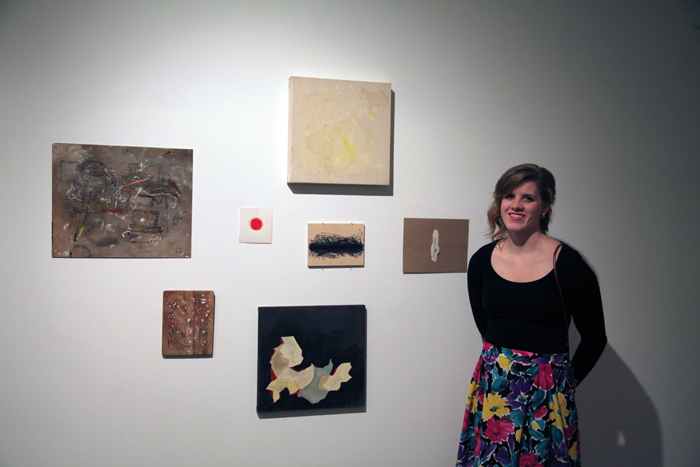
It’s difficult to separate what I do as an artist from who I am as a person. As a result, work I produce carries with its idiosyncrasies left by the trace of my hand. I would argue that people make connections with a work, not because of the trace of the personal, but rather something ambiguously familiar that they relate back to themselves. How many ways then can a work be read or experienced? Does the artists intent translate across to the viewer and their interpretations? Who creates the meaning or narrative in an artwork? What does the formation of the meaning we take say about who we are? Perhaps we both receive information from a work and project our own information onto it. We don’t just read a work of art, but ourselves. How does the dynamic between the viewer and the artist in putting information into and taking information from something, influence both making and reading ambiguously personal work?

a living document, Mixed media installation, 2013
I must make the call, and they must end it., Blue pen on paper, 2012
Derrick Hoekstra

So many times when I talk to peers, or other colleagues I hear the following words. I wish I could do that. Which is exactly why I refuse to work with one particular discipline over another. A larger artistic lexicon increases my chances of articulating my thoughts, and feelings. I fearlessly leap into new mediums and projects thrilled with the prospect of the unknown. My process is a just as much intuitive as it is contemplative; A work will come from my heart but be refined by my mind as it comes to maturity. My inspiration comes from my family, my children in particular, other artists around me as well as every day occurrences that go by unnoticed. My current work comes from my interest in line and relationships.
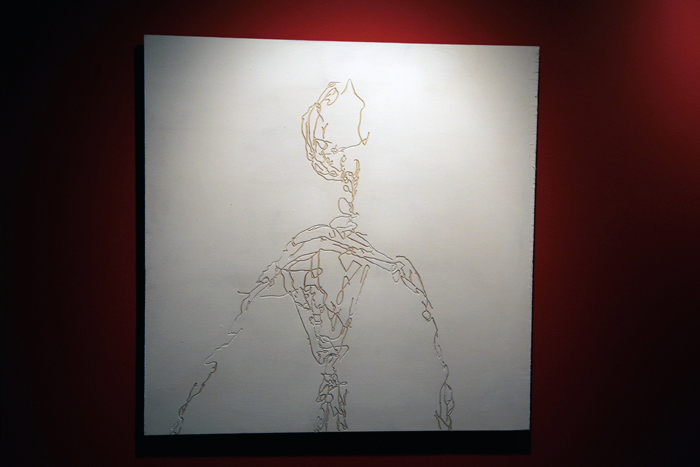
My self portrait Of anybody, Routered drawing on plywood, 2013
Jamie McKeague

I began and continue my process, with a love for shape, form and unrelenting interest in the intersection of pictorial looking (and thinking) and the physical relations to space. I have always been fascinated by microbiology, cells and bacteria, which are reoccurring influences in my practice. The senses are very important in my works, both in the creation process and also in the final product. I appreciate forms that do not conform to the standard of beauty our society holds, such as blisters, clusters, growths and imperfections.
Ambiguity, formlessness and shape are all attributes I take great care in when considering my works.

Polyps, Drift wood, bullet shell, human hair, bumble bee, nylon, cotton, red potatoes, thread, lace, walnut shell, 2013
Claire Reid
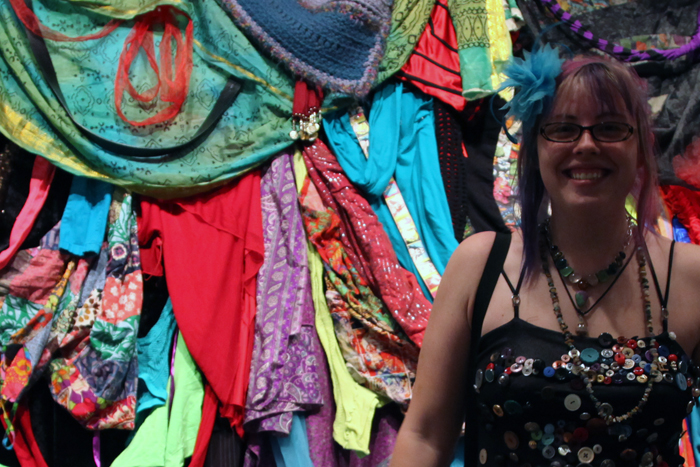
I am a fine art studio major this is my 5th and final year of my degree.
I am a multidisciplinary artist my work includes installation, photography and sculpture.
In my work I focus on themes of visual culture, identity and social constructions /paradigms.
I am concerned with the way in which people change or hide themselves in order to fit into society, find love, a job or even feel safe. Social constructs are reinforced by the media in which continually depicts unrealistic concepts of identity and reinforce concepts of normality. Current events influence my work; I am inspired by the social cultural, political and media environment.

Self Expression, Self Portrait, 89 shirts, 54 pants, 40 skirts, 22 dresses, 41 leggings/tights, 30 sweaters/blazers, some socks, ties, scarves and things, and 250 pins, 2013
Kasia Sosnowski

My current work explores relationships between the viewer, object and language within an installation format. I work in a wide range of media, allowing the materials to speak and guide me. I create environments for my objects to live in and create narratives and conversations within. I make forms that are ambiguous and indistinct allowing the viewer to make subjective associations. I use watercolour, paint, pencil, felt, found objects, and photography to communicate.
When I make work, I only feel I do not think. I like to throw myself into the present, and make work that comes from a space inside my body. I live in a land of materiality and immediacy. This is my favorite place, where everything can be touched and felt out. Impulse is the place I live in, it is where I reside, and it is where my work resides.
To create I must be empty, I must be a vessel for these forms. Read my soul, my guts, my teeth: this is where they come from, from the language of my body. My body is a language.
We forget to look, to breathe, we remind ourselves not to lose our bodies. I hope that the objects I make, the moments I construct give pause to the viewer and take them to a quiet place of contemplation: allowing them to engage with their body and explore their mind. I am interested in the separation between the realm of memory and the realm of experience by integrating language’s inability to visualize reality.
I am compelled to create. It provides an escape for me. I want to return to a place that I trust and find comfort in, make objects and forms there, then pull myself out of that space and present my creations to the world. I am interested in creating quiet moments, moments of pause that gently rest upon language’s spine. Creating a space of refuge, a safe restorative space.

Shaped By Ghosts, Mixed media installation, 2013
Void, Acrylic on canvas, 2012
Broken Hymns, Video, 1:30, 2013
Lisa Spinelli

My work is about process: the process of making art, the process of discovery, and the process of unveiling one’s identity. In the past I have often worked with various forms of self-portraiture, including watered down portraits in acrylic paint meant to portray an emotion as opposed to a “realistic” representation. The following direction of my work was to paint in pure abstraction, also using watered down acrylic paint. This time I used large stretched canvases and placed them on the floor for an effect of large, pooling puddles, combined with dripped lines, which I created by tilting the canvases. In these pure abstract paintings, I was aiming to reveal a subconscious self-portrait that was more about intuitive mark making than portraying anything from physical reality.
Currently, I am exploring a new approach to the self-portrait and individualities in general: the object of the journal and/or diary. I view the journal as a physically simple but elegant object that is more complex beneath its surface. My aim is to examine in depth the significance of a journal as an object, as well as the meaning and history of the act of journaling itself. In this process I am currently using scanners as cameras to document journals, and I am looking into exploring video and installation as well.

Journals Unveiled, Digital prints, 2013
Meghan Verkerk

Everywhere we look there are an abundance of gadgets and products surrounding us, from the clothing we wear to the cell phones in our hands. Whenever we open our eyes, there is a product. We cannot hide from mass production – but how does this affect us emotionally and how does it affect our artwork? In my work, I try to experiment with the idea of mass production within the fashion industry, by using plastic manikins.
Recently, I have been teaching art and fashion studies at various high schools, as my practicum towards my Bachelor of Education degree. Teaching has left little time for creating my own art; however, upon returning to the U of L in January, I have been exploring and creating new fashion inspirations, which has led me to start making white plastered figures.
My artwork investigates the interaction of the basic elements of art, in particular, colour and shape. I have been drawn to the simplicity of manikins and how they are ready-made objects that are considered disposable. I want to understand how mass produced fashion is represented, how it impacts people and what influence it has in our modern society.
I am currently interested in the interaction between sculpture and fashion and in trying to find a balance between them. My fascination with mass production has lead me to think about juxtaposition- of making something simple yet different, causing the viewer to have a second glance at my artwork. I am working on a series of plaster casts of baby shirt forms which are a little odd. I enjoy the repetition of the simple forms and the relationship they have with each other.

Organic Growth, Paper towel and pen, 2013
Mixed Torso, Plaster, cloth, sawdust, felt, dirt, 2013
Kala Walton

I sat on the edge of her small single bed; the bedding was a light green with a large pink floral pattern, a pattern not easily suited to her character, though she had a soft side. I selected my words carefully, despising the feeling of being weak, refusing to cry, even with someone who had seen me at my most vulnerable. I slowly spoke each word, visualizing them in my mind before they escaped my lips. I waited. The blow of honesty didn’t come. I felt her arms reaching for me, her body gently pulling me into hers and I felt the warmth of her soak through me like a dry sponge, expanding as I allowed myself to be immersed in her scent. I did let myself cry then, my whole body sighed with relief, this needed touch, this longing to be held, to be held in such a tender way soothed me to my core. The embrace of another had granted me an understanding of myself. This simple but beautiful gesture of embrace fanned a small spark deep inside me that grew into a small flame of hope.
My art practice encompasses sculpture, installation and video. My current project focuses on human intimacy, the embrace, and the personal experience of coming to self.
The idea of the other in the caress is central to my artistic exploration. Temple Grandin is an American doctor of animal science and a consultant to the livestock industry whose understanding of the importance of being embraced has driven her success in the livestock industry. She has constructed her own hugging machine that allows her to feel the comfort of an embrace without being enveloped by another. Grandin has allowed her life experiences to inform her work. Diagnosed with autism at a young age Grandin has written many books about her experiences as an autistic woman including, Temple Grandin: How the Girl Who Loved Cows Embraced Autism and Changed the World. Her understanding of self has allowed her to succeed, not despite but because of her autism.
I’m going through a period of intense self-discovery, which has led to an evolution in my artistic practice from an attempt to understand identity through childhood memory into a focus on the present. In my current work I’ve chosen to closely align my exploration of identity with my artistic practice, allowing personal discoveries to inform my work as they arise, thus creating a dynamic and shifting artistic terrain. Understanding my sexuality is an essential element of this process of discovery; the impact of the embodied self being enveloped by the body of another is an experience that has brought further understanding of my own identity.
My most recent art work involves the pairing of the bodies of women lying in positions of repose and embrace, and draping their bodies with wet plaster gauze. The resultant sculptural traces reference time, commemorate and are quietly attentive to intimate exchange. The embrace is represented as a beautiful interaction between two people that can hold many different layers of intention. The intention of the embrace can be admiration, celebration, greeting, formality, kinship, friendship, passion, love, loneliness, despair, fear, support, and condolence. I am most interested in the caress of the lover, and my work focuses specifically on the intimate exchange of lesbian lovers.
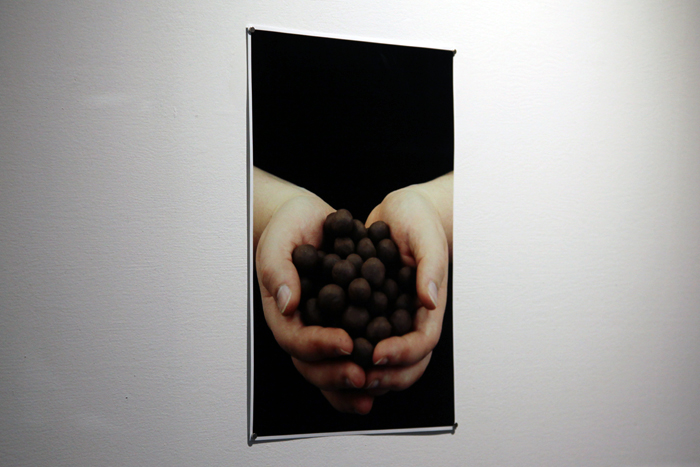
My Embrace is My Teacher, Documented performance, 2012
Curatorial Statement
Formed & Formless
From one point of view the history of art can be read as one of a series of projects for bringing the sensible world into order and giving it form. Out of the unity of undifferentiated sense data distinctions are made, and categories created, named and organized. From this process language emerges, the symbolic order is established and ideal shapes and forms are identified and privileged. We become able to talk about and manage our world. At the same time the forms we institute also manage us, dictating—at least in part—our relationship to the sensorium.
Yet as art historians in the 1990s pointed out, this history of form and meaning-making has been haunted by the question of formlessness. This includes both those elements of materiality and experience that exist prior to the individualization of form and those that are necessarily excluded as particular forms are defined. This may include, for example, all the shapes that elude idealization: the ones that are not quite circles, or not quite rectangles. The millions of colour variations that go unnamed. All the mounds, clumps, blobs and messy strands. All the things that are disintegrating or decomposing, that are coming into or losing form. The things that lack names and fit no categories.
As a precondition of form, the formless exists as potential. And although the formless resists and exceeds language, you will see that for students at the University of Lethbridge, it remains wide-open to dynamic artistic exploration.
– Richard William Hill
Guest Curator
About the Curator
Richard William Hill is a curator, critic and art historian of Cree and other heritages. His research focuses primarily, but not exclusively, on historical and contemporary art created by Indigenous North American artists. As a curator at the Art Gallery of Ontario, Dr. Hill oversaw the museum’s first substantial effort to include Indigenous North American art and ideas in permanent collection galleries. He also curated Kazuo Nakamura: A Human Measure at the Art Gallery of Ontario in 2004, co-curated, with Jimmie Durham, The American West at Compton Verney, UK in 2005 and, beginning in 2006, The World Upside Down, which originated at the Walter Philips Gallery at the Banff Centre in 2006 and toured across Canada.
Professor Hill’s essays on art have appeared in numerous books, exhibition catalogues and periodicals. He has a long association with the art magazine FUSE, where he was a member of the board and editorial committee for many years and now writes a regular column reviewing recent art exhibitions. He is currently revising a book on the problem of agency in the art of Jimmie Durham, the subject of his PhD thesis.


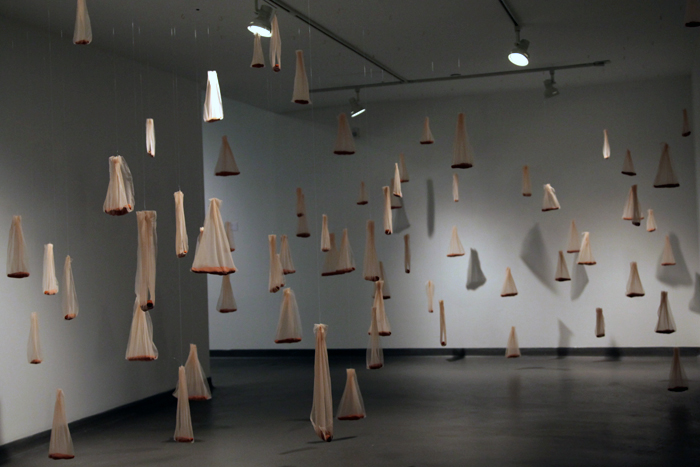
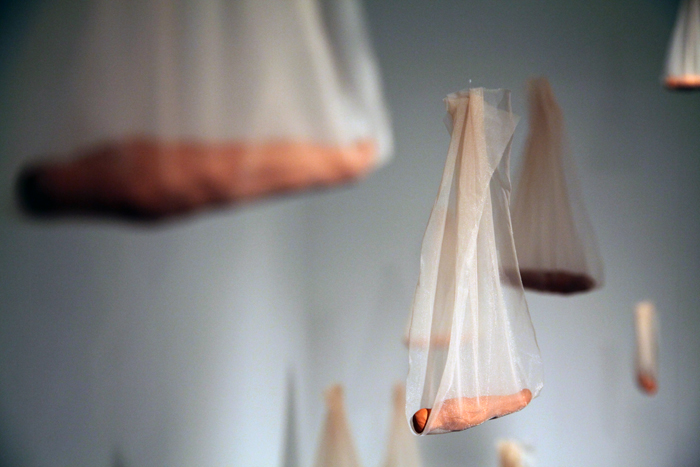
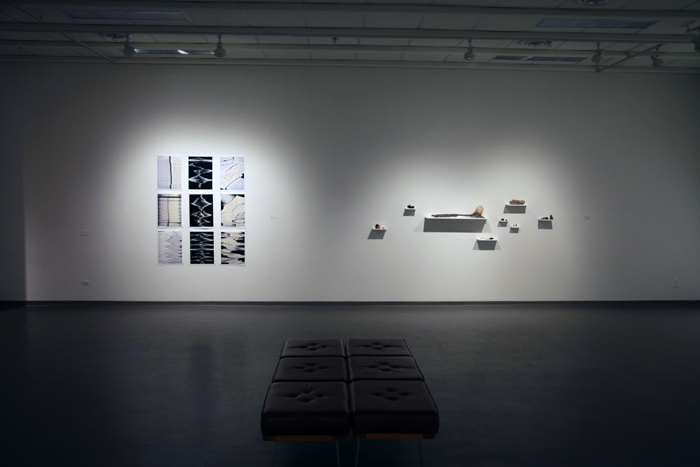
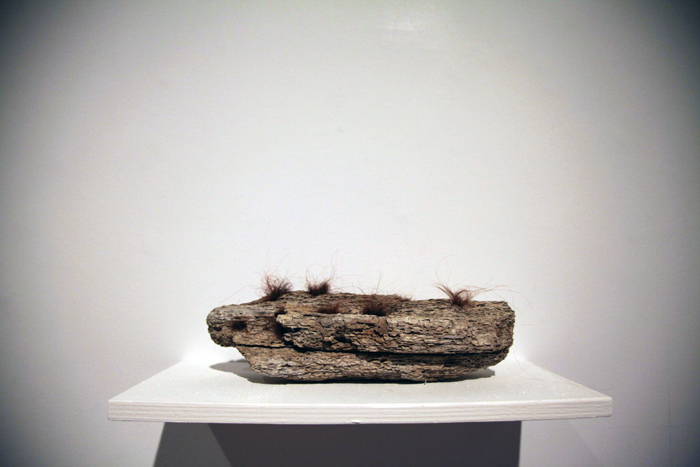

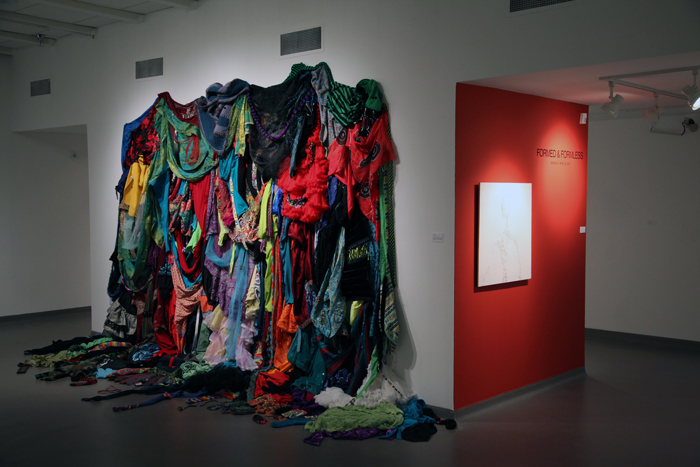
37 thoughts on “Formed & Formless:
Annual Curated Student Exhibition 2013
March 8 – April 18, 2013
Main Gallery | Centre for the Arts | W600”